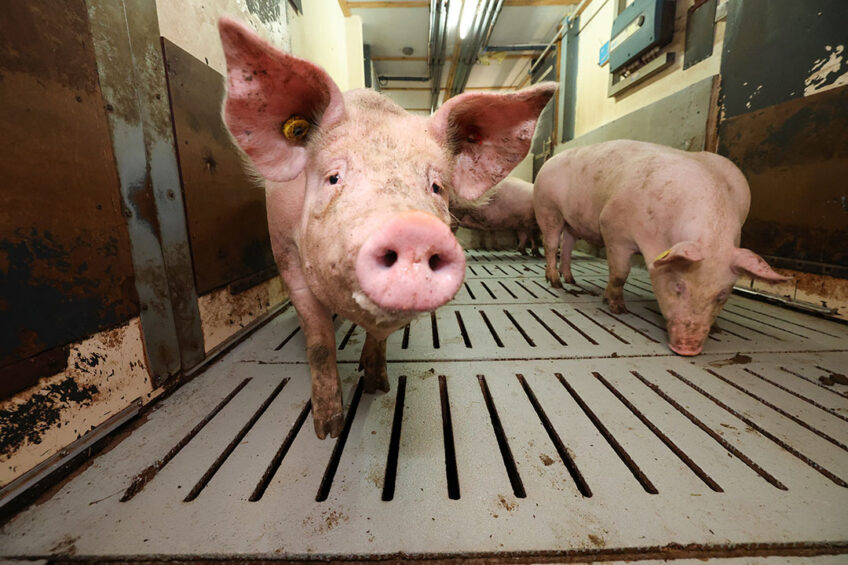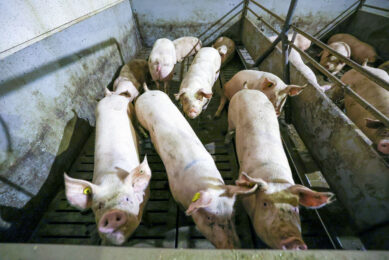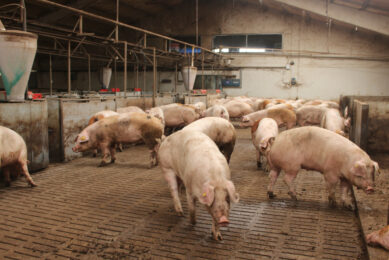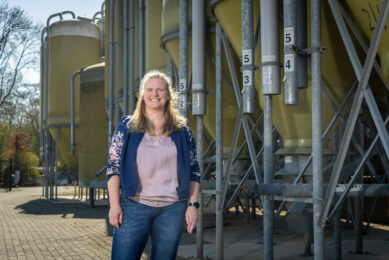How can gilts be transitioned to become successful sows?

The replacement of gilts is easier said than done. How can we ensure that newly introduced members of the herd will also perform well? Here are 8 factors to consider – long before they join the breeding herd.
Gilts are the foundation of breeding herd performance. Successful transition of eligible ones into the breeding herd maximises herd stability. It also enhances lifetime productivity, performance and longevity in the sow herd. Selecting gilts with the greatest reproductive potential and appropriate management of their physiological state and metabolic condition at service are key factors of a successful development programme.
Start development practices at birth
Gilt development practices should be started at birth to manage efficiency of replacement production; to select effective fertile gilts; to provide a consistent supply of service-eligible ones; to manage weight, physiological maturity and a positive metabolic state at breeding; and to improve pork production efficiency.
Successful transition requires coordination of a proper nutritional programme, optimised growth rate, smaller litter size, understanding of body criteria targets, ensuring appropriate housing, considering environmental temperature, stimulating gilts by boar exposure and confirming healthy ones in herd.
 Design a proper nutritional programme for gilts
Design a proper nutritional programme for gilts
A suitable nutritional programme begins at weaning and continues until the end of first lactation. The nutritional programme should be designed to meet nutrient demands for adequate growth and development. The age and body weight of gilts moved to the breeding herd from the gilt developer facility affect diet formulation.
The US National Research Council recommends increasing dietary calcium and phosphorus concentrations to maximise bone mineral content and to improve bone strength characteristics. After gilts are selected, they need to be placed on a lactation ration that provides the necessary elevated levels of protein, lysine, calcium, phosphorus and micronutrients to minimise any risk of insufficient bone mineralisation and fractures during later mating or pregnancies and to increase ovulation rate and the number of piglets born.
 Optimise growth rate
Optimise growth rate
Optimising growth rate early in the gilt’s life has positive impacts on lifetime productivity. Inadequate colostrum consumption after birth results in reduced growth rate during the pre-weaning stage, which in turn causes delays in puberty attainment and reproductive tract development. Modern fast-growing gilts need a proper diet to maximise their body weight at mating and to increase their chances of remaining in the herd after their first litter.
 Create smaller litters
Create smaller litters
Litter size is an important reproductive trait, It is a critical factor impacting the economic benefits of the swine industry. Larger litters may lead to longer farrowing duration and are also related to lower piglet birth weights. Large litter size can increase the stillbirth rate, which has significant negative impacts on animal welfare. Studies show that creating smaller litters for gilts destined for the sow population reduces suckling pressure, improves pre-weaning growth rate and increases reproductive performance and lifetime productivity.
 Understand body criteria targets
Understand body criteria targets
Target body weight for gilts at breeding should be 136–154 kg (300–340 lb) to optimise reproductive performance and longevity in the sow herd and to ensure sufficient protein reserves during the first lactation. Lower lactation feed intake leads to increased mobilisation of protein stores for milk production, decreased reproductive performance and increased stillborn pigs and lameness incidence.
Therefore, body weight should be used as a target criterion before first breeding to avoid these issues. Producers need to ensure gilts enter the breeding herd in robust body condition. That condition needs to be maintained through gestation and first lactation to increase the chances of successful rebreeding.
 Provide appropriate housing
Provide appropriate housing
Housing affects age of puberty and fertility in gilts. Gilts reared in outdoor lots show early maturation compared to those reared in confinement. However, outdoor rearing is not practised widely, due to biosecurity reasons. Group housing optimises gilts’ reproductive development and decreases puberty age.
Gilts housed individually in crates have nearly double the incidence of silent heats and irregular cycles compared to group-housed gilts. On the contrary, gilts raised in groups of 50 or more have a lower conception rate than smaller groups. Thus, it seems gilts are best reared in groups of approximately 10–30 animals.
 Consider environmental temperature
Consider environmental temperature
Environmental temperature is another factor affecting development and fertility. Environmental temperatures of 32°C (90°F) significantly reduce the proportion of gilts reaching puberty, increase the incidence of cystic ovaries, enhance embryo mortality if the gilt is exposed between mating and day 16 of gestation and decrease the number of piglets born live. Conversely, gilts that experience wet conditions and reduced effective environmental temperatures need more feed to maintain their expected rate of growth and body condition and thus a positive energy status for optimal fecundity at mating.
 Stimulate gilts by boar exposure
Stimulate gilts by boar exposure
Boar exposure is important to stimulate early maturation, visible oestrus and cycling as much as 40 days earlier in gilts. Early puberty enables producers to wait and breed gilts on their second or third heat. This in turn leads to one pig more liveborn per litter. Boar exposure at a young age (less than 160 days) should be avoided. Other recommendations are to use mature boars for gilt exposure, to take gilts daily to a strange pen to be exposed to the boar and for gilts to have direct physical contact with the boar.
 Ensure gilts are healthy
Ensure gilts are healthy
Producers need to ensure that gilts are healthy additions to the herd. They should neither bring in new diseases, nor are susceptible to diseases already present. Before delivery and while in isolation, producers need to test all gilts need to prevent introduction of unwanted new diseases. They need to monitor new ones and boars daily for signs such as cough, diarrhoea, lack of appetite, and depression. Other signs are a reluctance to move, rough hair coat, bad coloured faeces, pale colour or rapid breathing. In addition, vaccination will make gilts immune to diseases already present in the herd.
Take-home message
Transitioning gilts to successful sows is not simple. There are many aspects to consider that will determine success at this stage of production. However, following an appropriate development programme will optimise pig birth weight, maximise litters per year, increase lactation yield and enhance longevity and lifetime productivity.











